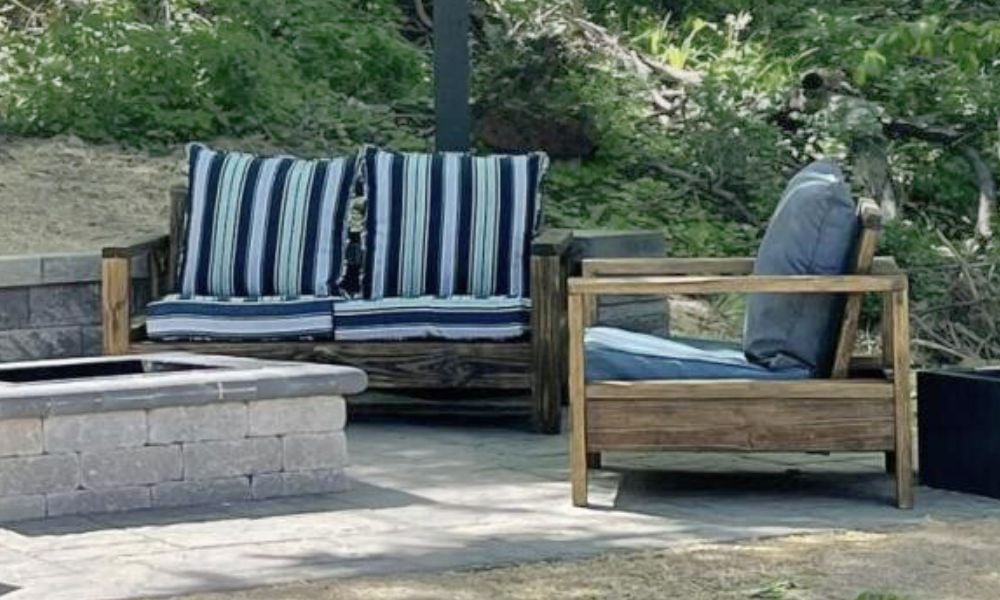
Build your own outdoor side chair frame. Our free plans make it easy! Uses off the shelf materials and basic tools.
Outdoor chair features an inclined seat and backrest, wide armrests and sturdy 2x construction. Heavy (so won't blow away in the wind).
Also build the matching sofa and matching loveseat.
Collections
Preparation
Shopping List
- 1 - 1x4 @ 8 feet long
- 1 - 2x2 @ 8 feet long
- 2 - 2x6 @ 8 feet long
- 4 - 2x4 @ 8 feet long
- 2-1/2" Kreg Pocket Hole screws (about 40)
- 2 -1/2" self tapping wood screws (about 30)
- 1-1/2" self tapping wood screws (about 8)
Cut List
- 4 - 2x4 @ 22" - legs
- 2 - 2x4 @ 34" - arm rests
- 2 - 2x4 @ 31" - arm supports
- 2 - 2x6 @ 31" - arm supports
- 2 - 2x6 @ 25-1/2" - bases
- 1 - 2x4 @ 25-1/2" - back
- 1 - 2x2 @ 25-1/2" - back rest top
- 4 - 2x4 @ 23-3/4" - back slats
- 1 - 2x6 @ 29-1/2" - back base
- 2 - 2x2 @ 29-1/2" - seat slat cleats
- 4 - 1x4 @ 23-1/2" - seat slats


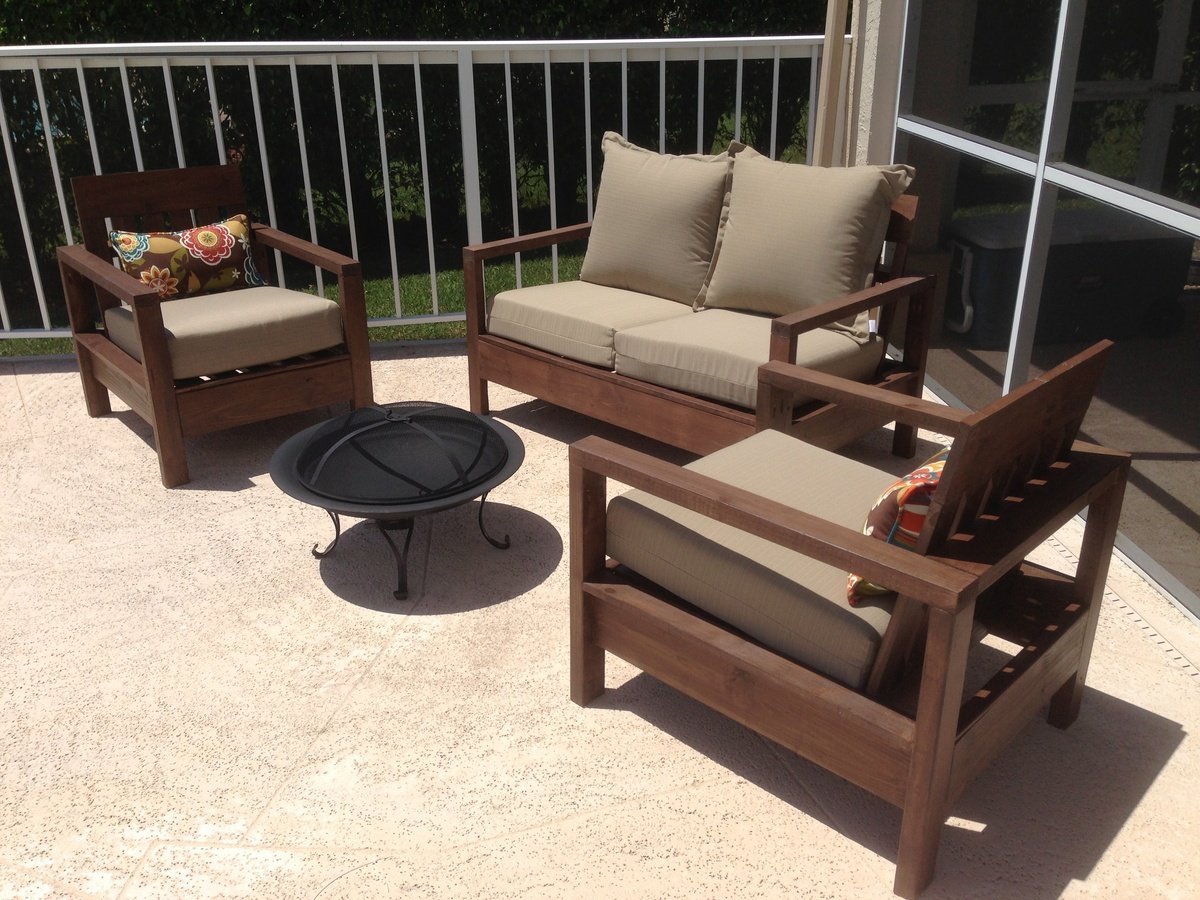








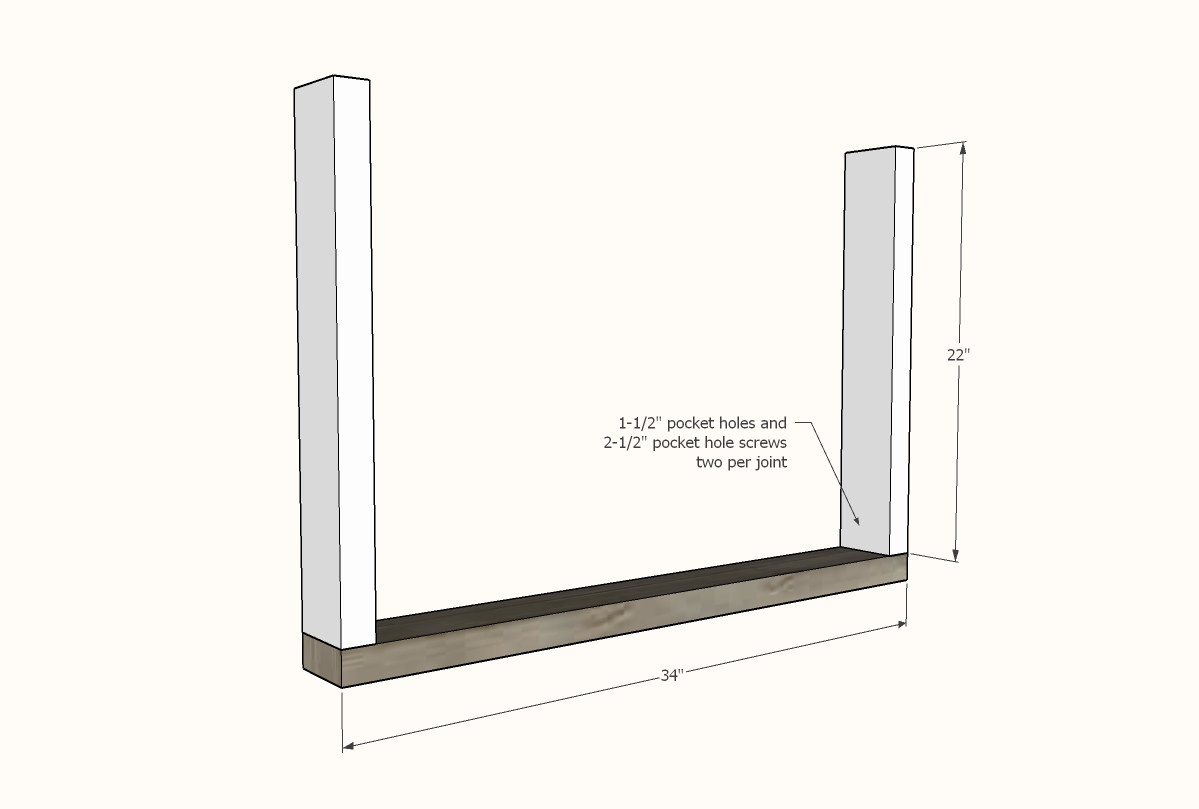
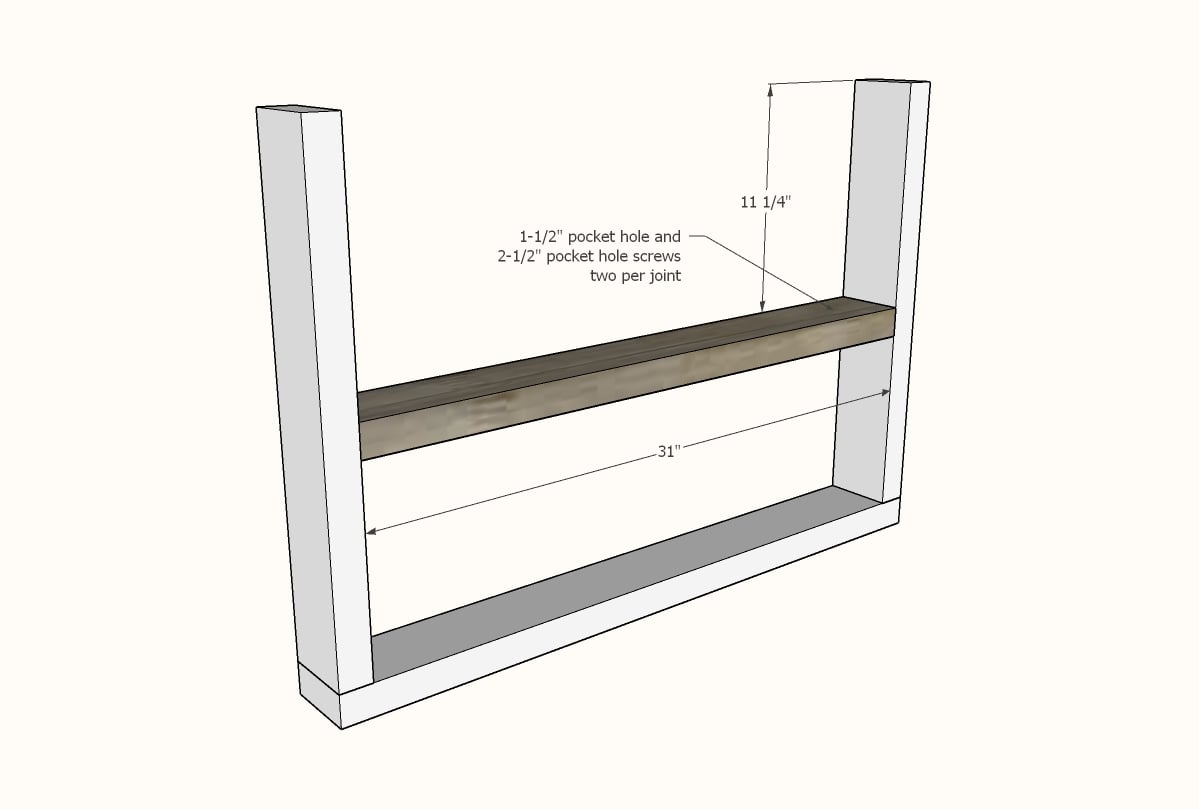

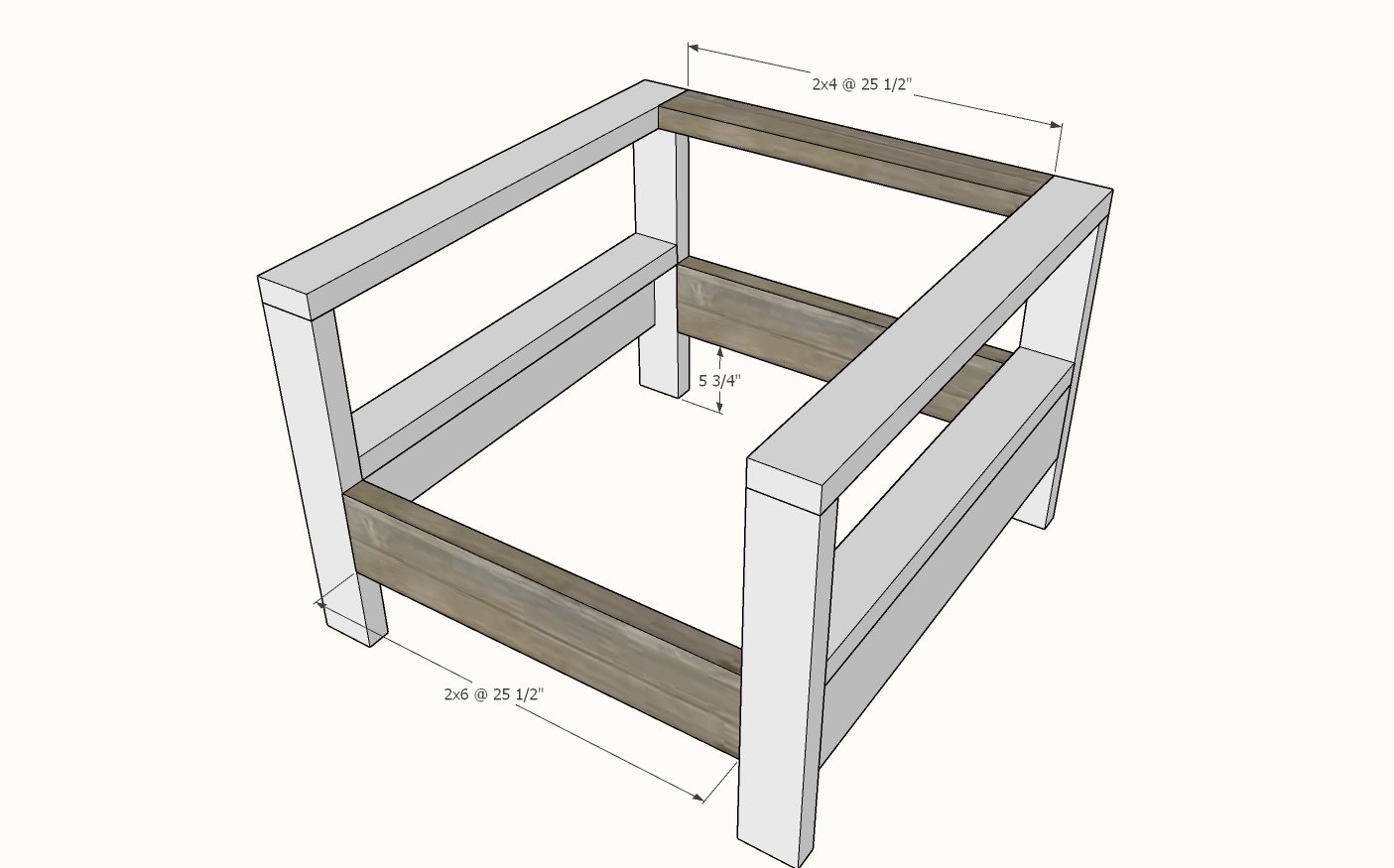
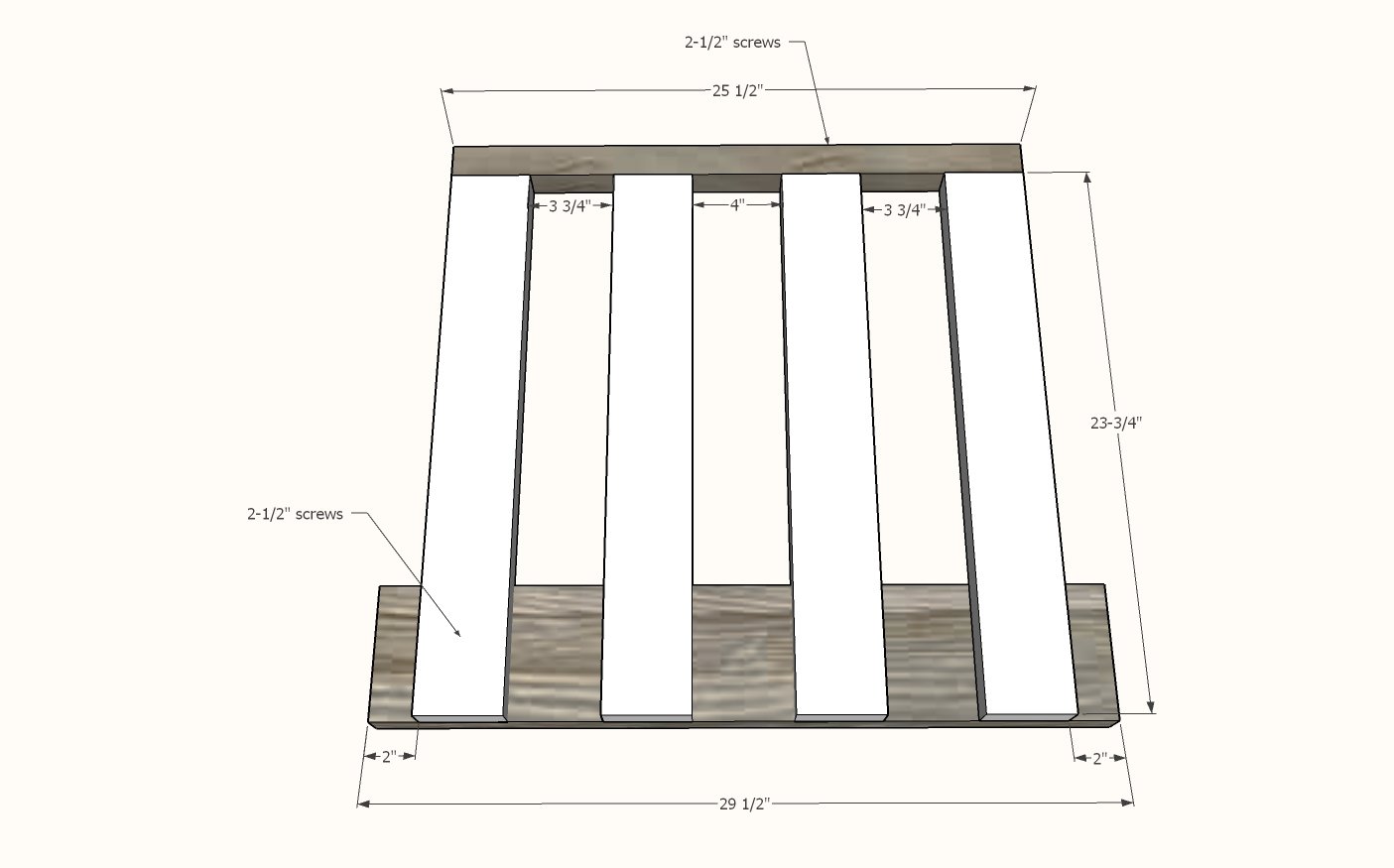
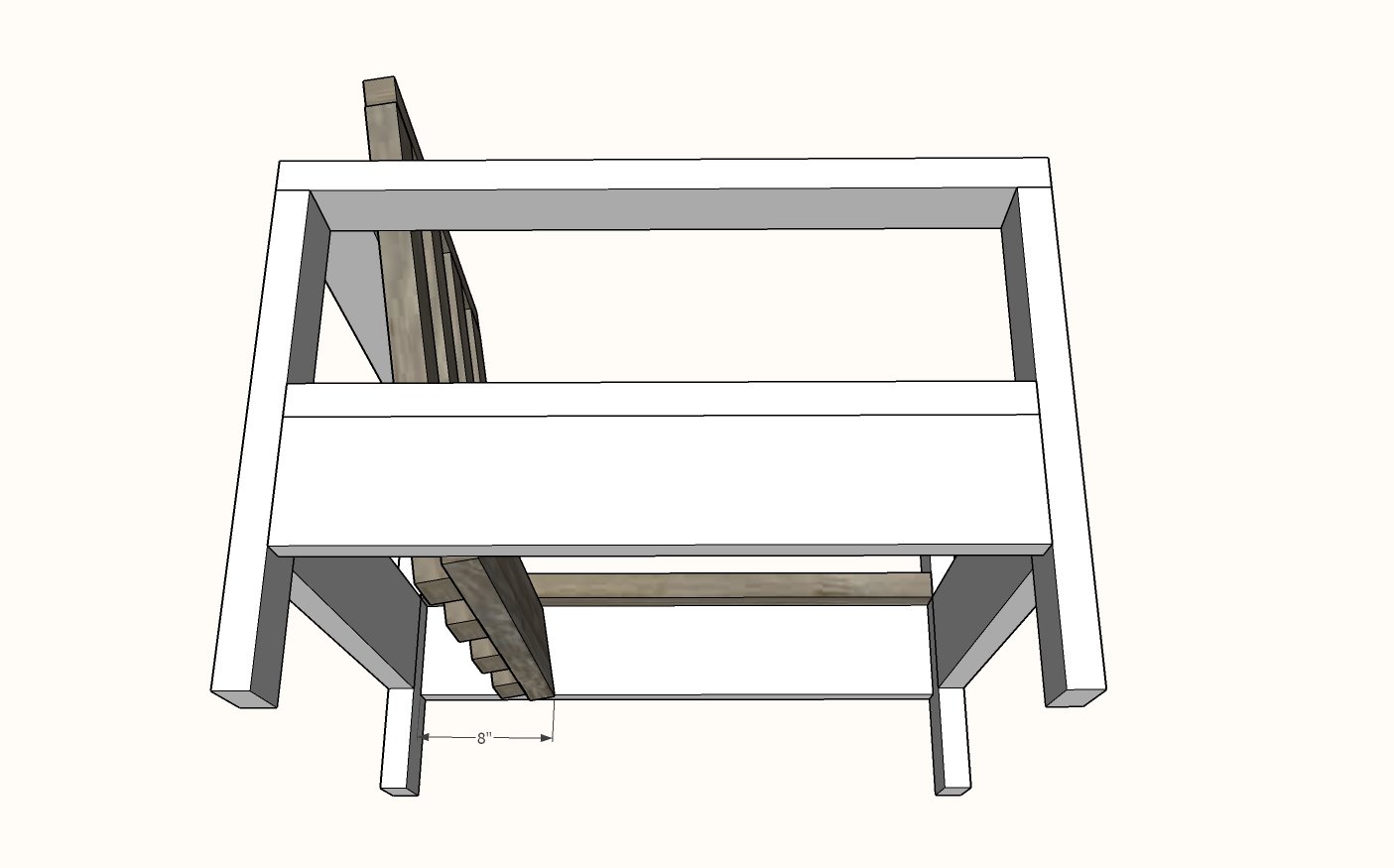
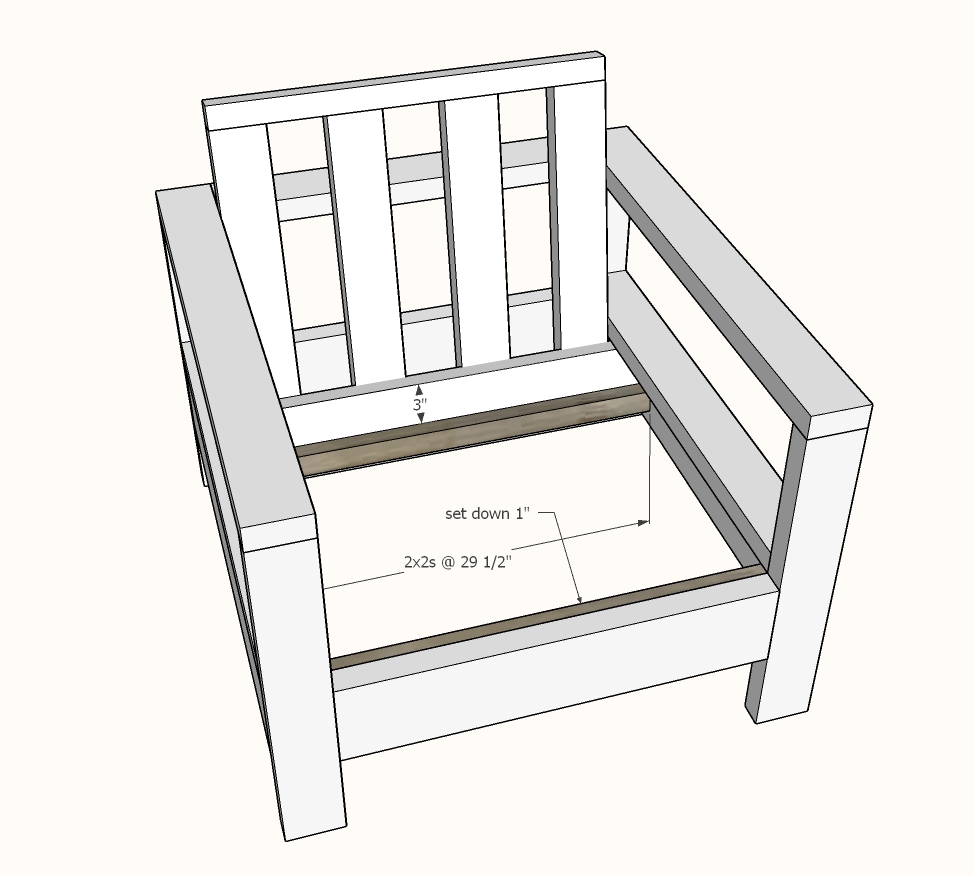

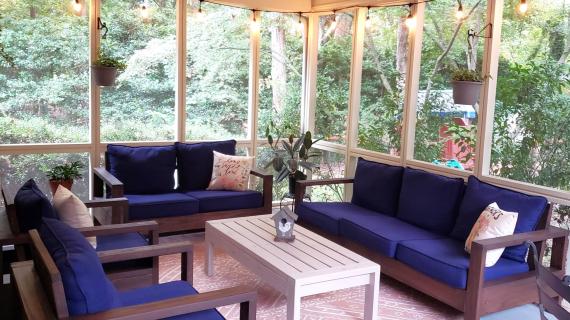
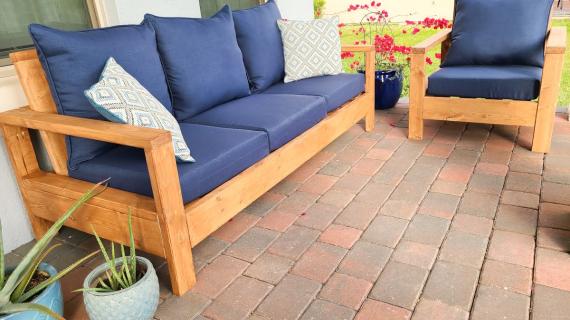
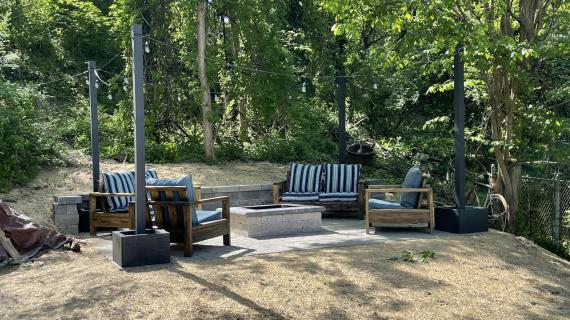
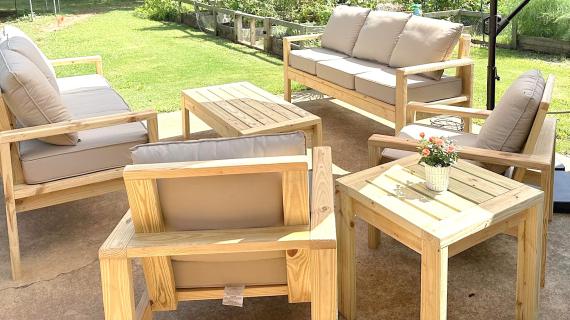
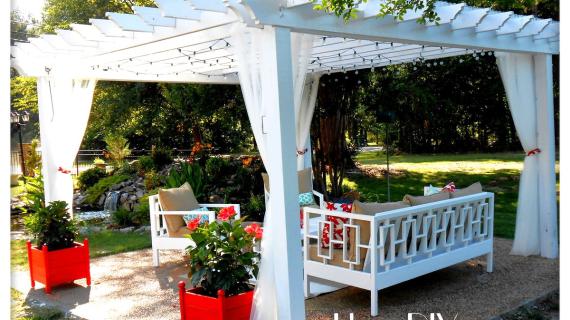
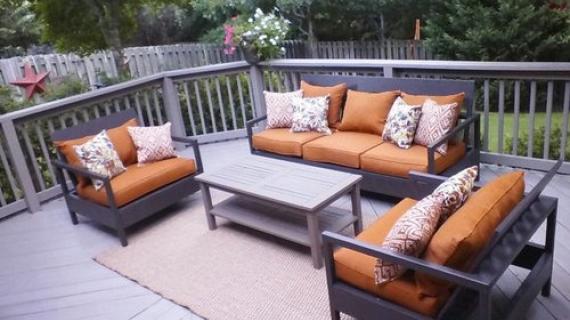
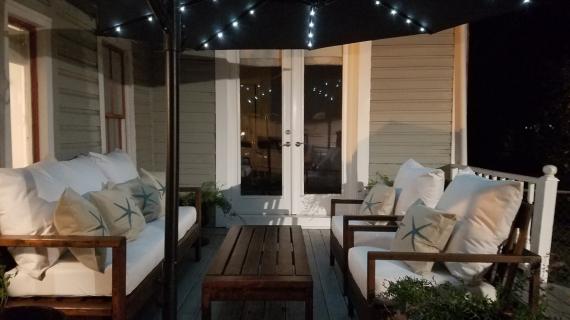
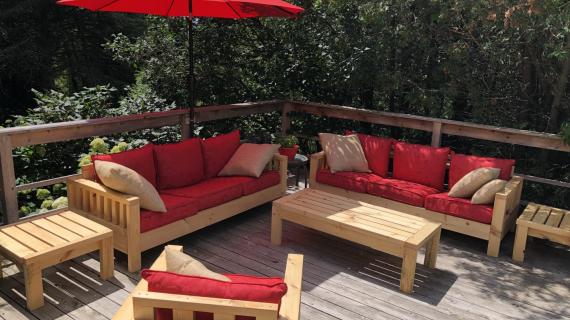
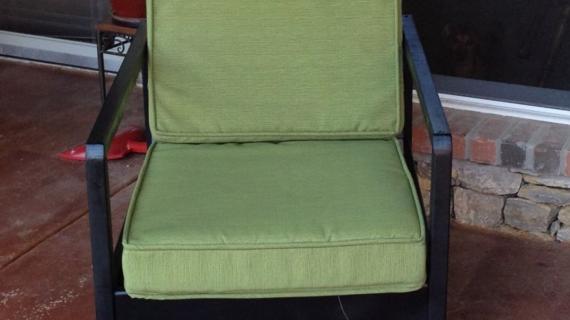
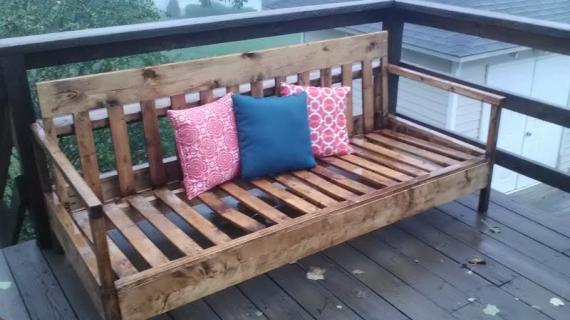
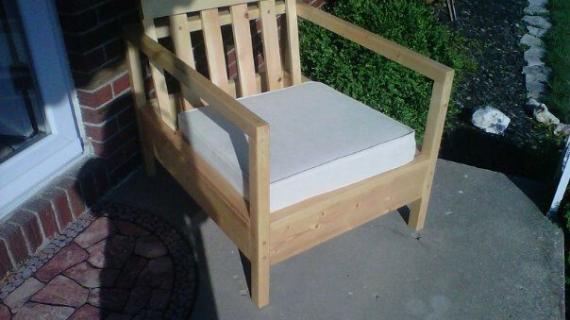
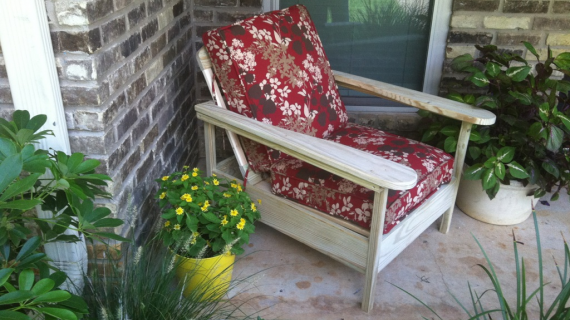

Comments
Guest (not verified)
Fri, 06/10/2011 - 12:03
Indoor?
I would LOVE LOVE LOVE to build one (actually) two and use them indoors...
In reply to Indoor? by Guest (not verified)
Ana White
Fri, 06/10/2011 - 14:02
Great idea - no reason you
Great idea - no reason you couldn't.
ddietz12
Fri, 06/10/2011 - 14:00
There is never a blah week at
There is never a blah week at Ana-white.com. great job on this collection!
Guest (not verified)
Fri, 06/10/2011 - 16:37
Never, ever a blah week!
Never, ever a blah week! Thanks for posting. Just what I've been wanting to build. Thanks so much Ana. Can't wait to see how the momplex comes along! Thanks for including us in that venture!!
emmarosemc
Fri, 06/10/2011 - 17:53
Definitely never a blah week
Definitely never a blah week here!
Guest (not verified)
Sun, 06/12/2011 - 09:08
After seeing this collection
After seeing this collection I am finally dedicated to making some great outdoor furniture for us to enjoy this summer! Seems like buying a Kreg will be necessary. It seems like there is a HUGE price difference $39-$140... any tips????
deanna_g
Tue, 06/21/2011 - 10:54
Kreg Jig
I highly recommend the $99 Kreg Jig system. I thought about buying the Jr. and seeing if I liked it first, but just decided to bite the bullet and do it the right way the first time. I LOVE my Kreg Jig. My husband is envious. (-;
Thomas (not verified)
Thu, 06/16/2011 - 06:25
Is the supplies list wrong (or am I)?
I'm looking at the list of supplies and it says 4 - 1x3, but I only see the need for 3 boards based on the cuts.
Board 1: 25" + 16 1/4" + 16 1/4" + 16 1/4" + 16 1/4" = 90"
Board 2: 25" + 25" + 25" = 75"
Board 3: 25" + 25" = 50"
All are less than stud length. You end up with what the cuts list calls for: 6 - 25" sections and 4 - 16 1/4" sections.
What am I missing?
Thanks!
Thomas (not verified)
Fri, 06/17/2011 - 07:15
Argh!!!
I just bought all the wood for 2 arm chairs and the sofa...came home to order the cushions from Target. They are NO LONGER on the Target website!! They were there yesterday. I CHECKED. They have none of them in any color. Now I have to find cushions.
Frustrated,
Thomas
Guest (not verified)
Fri, 06/17/2011 - 07:55
Love you site. I was also
Love you site. I was also shocked to see that the cushions were sold out, but found these of a lesser quality for half the price http://www.amazon.com/gp/product/B004BVB11Q/ref=ox_sc_act_title_1?ie=UT…
Simone (not verified)
Wed, 08/24/2011 - 09:27
DOREEEEII SUAS IDEIAS .....
Olá , adorei seu site , estava procurando muito algo assim , onde tivesse as medidas dos projetos , muito legal da sua parte dispor para nós , leigos em marcenaria .Comprei uma casa , onde terei que reforma-la , e mobilia-la,como aqi no Brasil , as casas não são tão grandes como as daí , tem muitas ideias que poderi aproveitar ....
Obrigada .
Beijos
Simone
Riley (not verified)
Thu, 04/19/2012 - 20:48
Buy vs cut list
Am I crazy? The cut list has 1x2s but the buy list does not?
Peter Cwik
Tue, 06/12/2012 - 16:27
Is there a SketchUp of this?
Ana,
Is there a SketchUp of this chair or the other "Simple White" items? I've made some changes and would like to update the plans, and not start from scratch if possible.
Sue_McL
Sun, 08/05/2012 - 13:04
Raising the seat height?
Love the plan but want to raise the seat height to about 20" total. Will adding another 8 3/4" in height require changing the legs from 2x2 to 2x4s?
mjc8870
Thu, 12/27/2012 - 07:45
cushion size
What cushion size should I look for if I buy pre-made cushions ?
BadgerBen82
Tue, 10/12/2021 - 18:06
I don’t know why I’m…
I don’t know why I’m struggling to figure out how to adjust these dimensions so that a cushion size of 22.5" L x 5.0" H x 22.5" W. I know these plans are made for 25x25 cushions. Do i just reduce all cuts by 2.5 inches? It just seems off to me for some reason! Any help is appreciated